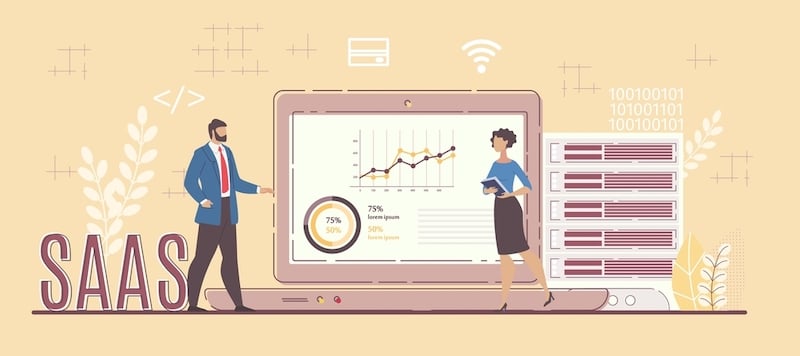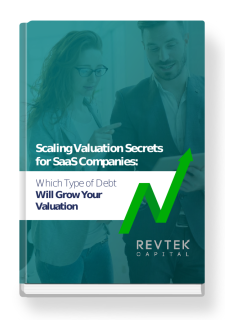Until the recent past, business and marketing models have been built around companies trying to sell a physical product. They want you to buy the newest car, the best watch, or even that tendy, eco-friendly, hand printed tee.
These all have one thing in common: they are items.
In the world of items, a one-time purchase is all you need to close a sale and call it a success. Sure, repeat customers are important, but they are not necessarily the backbone of your business operation– especially as the price per item rises.
In SaaS, the game changes.
For the first time, companies offering Software as a Service are confronted with the very real challenge of having to reinvent the wheel to work for the digital marketing machine. SaaS companies are looking for ways to not only make that initial sale, but have the customer continue their subscription year after year.
So in this new landscape of SEO and lead generation, what are the methods that really work for selling you SaaS products? Keep reading to find out.
Hitting Your Target
The SaaS industry relies on one thing: providing solutions to other people’s problems. The better you can achieve this goal, the more useful your product will be to those who buy it. Remember, even the best product ever developed is useless when in the hands of people who don’t need what it can provide.
This is where the first challenge of the SaaS business rears its head.
When building your target audience, you have to fill the need of your niche. This means you have to have an in-depth awareness of their workflow and some of the events that slow it down.
Perhaps there is a specific service, set of tools, or workflow organization they need access to, perhaps they need integrated cloud storage and communication– whatever their particular struggles, you will only start selling products if your service provides a solution.
So how do you find the right clients for your product? Well, it takes an investment. In fact, it often requires more upfront investment than people realize.
Finding (And Keeping) the Right Clients
The topic of generating qualified leads is big in the SaaS community for a reason. Qualified leads will bring your product to an audience of the right clients, meaning they are not only more likely to take the plunge and purchase your software, but they are more likely to stay for the long haul.
The problem is, this kind of lead generation does not come for free.
Known as Cash to Acquire a Customer (or CAC), this important metric shows a heavy upfront cost to begin the lead generation process. The idea here is that the cost will be recuperated and surpassed because the clients found will be inclined to keep repurchasing your product. This is known as Lifetime Value (LTV) and is used to show customer retention over time.
The good news is– in SaaS, existing customers are the easiest to market to. This means that the more customers you earn this way, the more likely they will use new or upgraded services from you in the future.
These are only two metrics out of many that are used to help generate leads and boost conversion rate. In fact, it’s a different topic entirely. That’s why we have an article dedicated to the topic. (And it even shows you how to calculate your own metrics!)
Making the Sale
Now that you know how to find your audience, the next step is looking at how businesses actually entice people to make their first purchase.
The technology industry is fast. Updates are made on a regular basis and software licenses are usually renewed on a monthly basis. Because of this, you want to make sure your sales funnel acts the same way. Too many choices or too long of a sign-up process and you can risk losing the sale.
To boost your chances of success, keep the following 3 tips in mind.
Offer Something Free
In the world of physical products, giving something away for nothing is frowned upon. However, in SaaS, having a free tier, a free trial, or any other kind of freebie is a major win.
Freemiums allow your potential clients to experience a test drive of your product while having an account waiting in the wings– all they need to do when their time is up is simply add payment info.
The speed, ease, and experience of offering free service creates a robust onboarding process which often yields better results than asking for immediate payment on a product where your clients are still unsure.
Have Transparent Pricing
When you are offering different tiers of products, be 100% transparent with your rates and what each package offers. In combination with offering only a few options, this will further help customers streamline the decision making process– resulting in potential conversion. This is also a great way to highlight freemium models or current promotional offers running on your site.
Have a Solid CTA
Your Call to Action isn’t just a button on your landing page. In fact, your CTA can and should take many forms and be located in many places on your site.
Your clients are finding your product through many different avenues including your blog, your social media, SaaS review sites, and even referrals. Having multiple CTAs gives them more chances to buy your product, letting them jump on the impulse as soon as their interest is piqued.
Craft Dynamic Content
Having the right leads and the right sales funnel is important, but what about content marketing? Isn’t there more to selling your product than just having it out on the internet?
Content marketing is in a peculiar gray area where it is both widely accepted and widely misunderstood. What often ends up happening is that SaaS companies miss the opportunity to craft the right type of content for their audience base, resulting in a less-than-impressive effect over time.
For one, we all know blogs are important. The issue is– why? The reality that many businesses don’t realize is that having a regular blog not only populates your site with content to show you’re reputable, but gives you the chance to speak with your audience no matter where they are in their journey.
For instance, let’s say a client is looking for a workflow solution. They type in some search terms into google and content from your blog appears thanks to good SEO and knowledge of user intent. As they continue reading, they start clicking on your internal links, taking them to even more pages all hosted by your site. This not only tells them you are an industry expert, but it keeps them reading through your site as long as possible.
This is the first time they are interacting with your brand and the first time realizing you have a product that might help them out. So, by having content directed at the needs of your audience, you can get your company in front of more people– even if they didn’t know who you were before running a search.
Similarly, you need to also make sure your content is being brought to your audience in a way that they enjoy engaging with. This could mean anything from having a regular email marketing campaign, to an active social media presence, to a YouTube channel. It all depends on how your potential customers like to take in their information.
Do Great Work
At the end of the day, having a killer product will often sell itself. Word will get out, your referral base will grow, and loyal clients will talk about your system.
There is one final layer to this that you can add to give your customers one more reason to stay: customer service.
When you are dealing with software, it’s a living being. There are countless bug fixes, updates, and redesigns your client’s will travel through as they use your product. If they love your software but don’t know how to use it, that can create a huge conflict.
This is why your final responsibility is making sure you have the best customer support around. Customers know you stand behind your product and know how it works, saving them countless hours of potential troubleshooting if they start having difficulties.
When It’s Time For a Boost
This is where we talk about how RevTek Capital can help you on this incredible journey.
RevTek helps businesses grow. We do this by providing Capital in exchange for a percentage of your future revenue. In the world of SaaS, where upfront costs can put a real strain on lead generation, that added financial help can be the difference between a small growth spurt and truly amazing results.
Can the added help get your business where you want it to go? Connect with our team to find out.



